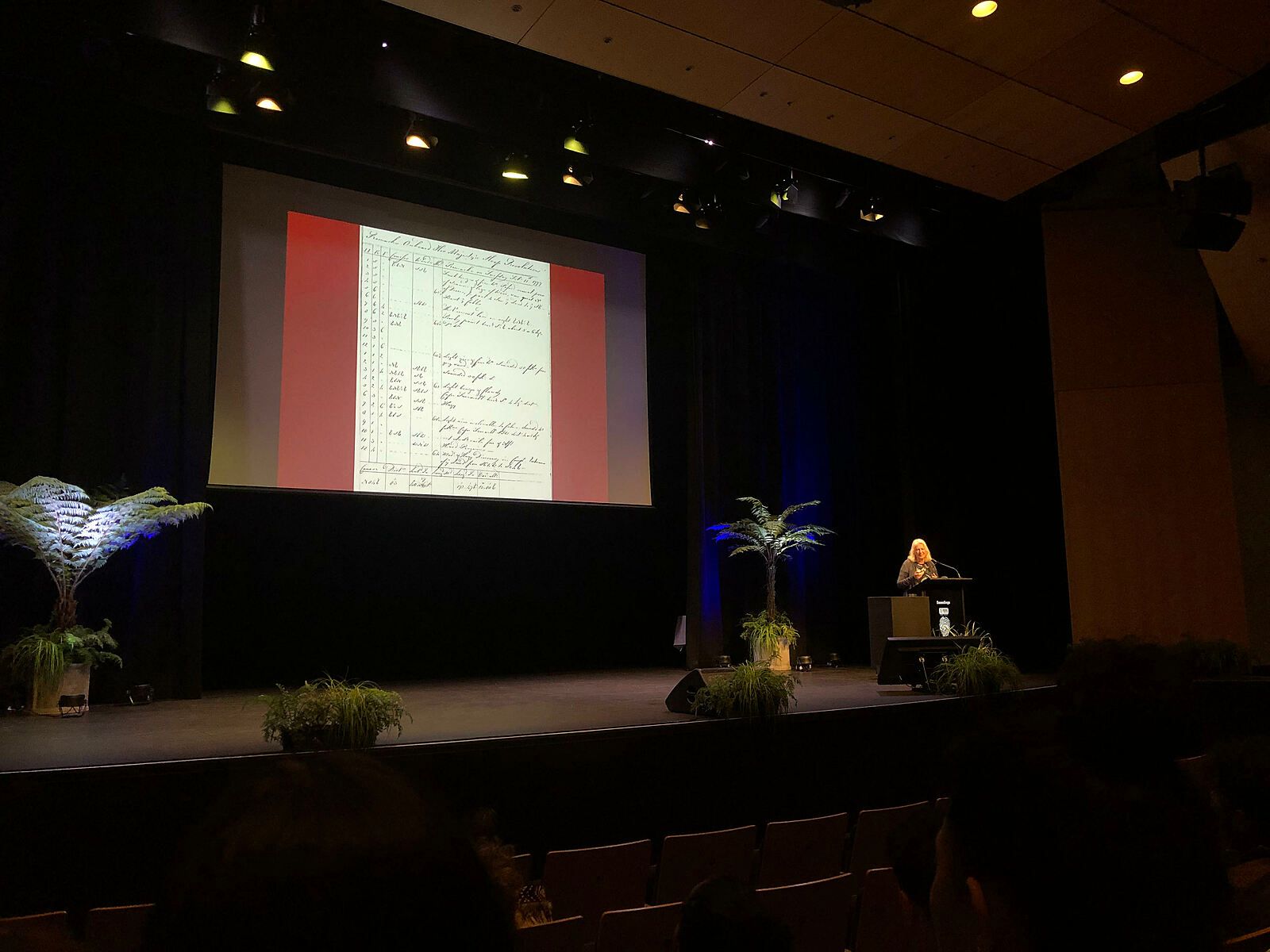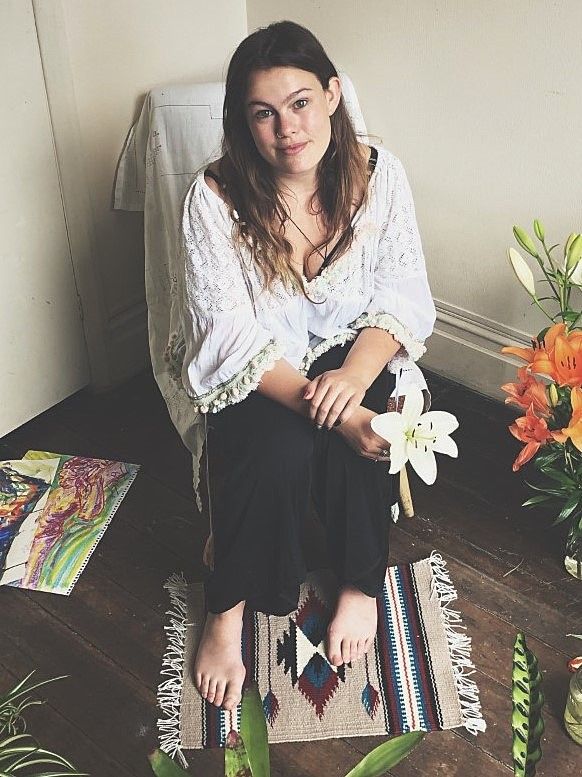We Need to Talk about Talanoa Mau
New Zealand Festival of the Arts event Talanoa Mau was supposed to be an inclusive and safe space for critical exploration. Did it meet those expectations?
Talanoa Mau began around 8:30am on a Monday, the karanga welcoming us into Te Papa. An anticipated event in the line-up of New Zealand Festival of the Arts 2020, it was described by curator Salā Lemi Ponifasio as a “Samoan concept for the practice of speaking openly. It is also a methodology of conflict resolution through discussion and openness, where deeper understandings can emerge.” To see the marae in a space with such a chaotic and oppressive history reminded me of a passage from J C Sturm’s poem At the Museum on Puke-ahu:
Becoming no more than
A likeness to a faded photo
The bearer of another’s name
The end of a line
On a whakapapa
A mark on a page
A notch on a stick
A mere speck
Of historical dust.
This pōwhiri was our initiation into the deceptive space that was this Talanoa Mau. The brochure we’d received for the event insisted that “Talanoa Mau opens up a multidisciplinary space for vulnerable dialogues and shared critical exploration of the most urgent questions of our times.” During the pōwhiri, guest speaker Peter Sellars, a professor of world arts and culture from the USA, performed an impassioned speech about climate change and how our islands are sinking. Clawing the sides of my chair, I glanced around the room at manuhiri… who did he think he was speaking to? Did he assume climate change was news for Indigenous peoples? There is an urgency to climate change, but a professor from a country that is one of the world’s largest carbon-emitters telling Indigenous people here about something they are very aware of didn’t feel right. This was the first warning sign.
We grabbed some morning tea, and I attempted to socialise. We were excited, and shared the names of those we were most eager to hear speak and perform. Mine were Jessicoco Hansell, aka Coco Solid, and Jahra ‘Rager’ Wasasala.
The first kōrero was by Dame Anne Salmond, who spoke on the origins of power and hierarchy in humanity. This was all very interesting, but lost gravitas coming from a Pākehā anthropologist. Let me make myself clear: this is not a dig at Dame Anne or the Pākehā speakers at this Talanoa Mau. It is a dig at the system, a critique of the colonial attitudes that imposed themselves on the Māori and Pacific peoples who attended.
Alistair Fraser then rose to play taonga pūōro. I assumed he was Māori. This was my first time listening to taonga pūōro, and Alistair Fraser is no doubt talented. But I am heartbroken that the first taonga pūoro I’ve heard live was performed by a Pākehā man. To me, it is a reminder of the knowledge he has, that I do not. It made me think of the recent Kiwibank New Zealander of the Year award, given to a Pākehā wahine, with mention of her contributions to the promotion of te reo Māori. When Pākehā take up space (or claim rewards and awards) that could – should – be given to Māori, we are reminded how unworthy we are of our own heritage. This event rubbed shame into me like salt in a wound.
At the end of the first session, two wāhine stood up to question the structure of the event, calling attention to the need for safe spaces for Māori and Pacific people. This idea of safe spaces by Māori for Māori was brushed over, and deserved more acknowledgment. The awkward response of ‘nothing ever being perfect’ was painful; it was described by one speaker as a “beautiful tension”, and this phrase bothered me. I thought it was more complex and disturbed than that. It made me wonder why there is such a romanticised veil cast over our colonial trauma. Perhaps it is best not to comment at all. I’d rather they had let silence consume them, as sitting in their discomfort would have been more respectful than plastic words.
Pākehā are all for equality, until they have to give up the mic for an hour or two
We heard from Pat Snedden, the Chair of the Manaiakalani Education Trust. He did not appear to recognise the irony of his lecture, in which he preached the importance of being a good ally – knowing when to take the back seat and to push Māori forward. He seemed uncertain of the role of ‘ally’, and I felt many of his questions would have been answered immediately if a Māori speaker were there in his place. We have plenty of conferences and events where Pākehā express their mamae for Māori, but it felt like poor taste to have so many doing so at this Talanoa Mau. Pākehā are all for equality, until they have to give up the mic for an hour or two.
The karakia was overlooked at the first lunch break. This was called out by a young man afterwards, pleading for respect for protocol. While on the surface it seemed like an honest mix-up – the Te Papa crew were expected to hold karakia but failed to – this wasn’t good enough. The pōwhiri looked good, but after this, the tikanga ended. All that transpired over the next two days occurred inside the museum, where our culture has been picked and prodded for years, hidden and critiqued, ‘preserved’ for the age when we Māori finally die out.
One woman even asked, “Where’s the European perspective?” Look around you, sweetie!
There were many layers to this event. Those who felt them could not shake them off. We were reminded of the performance aspect of these environments, the way people in charge pick and choose what is palatable compared to what is real and challenging. We spent our lunch and tea breaks baffled, huddled in confusion and outrage – this was not at all what we had expected. Everyone was so concerned with white fragility and catering to the European audience. One woman even asked the speaker Dr Emalani Case, “Where’s the European perspective?” Look around you, sweetie!
There were some truly incredible speakers, including the amazing Coco Solid, who shared realities and acknowledged with grace the issues with the institutionalisation of art, and our presence in the museum. I found her relatable and sincere, her words filling the space more like a conversation than a lecture. It felt as though she saw and acknowledged us.
“Is it fair that Māori feel shame so that Pākehā don’t?” I felt that in my bones
Dr Liana MacDonald spoke on shame, and not feeling Māori enough – an important kōrero close to my own heart. “Is it fair that Māori feel shame so that Pākehā don’t?” Liana asked the room. I felt that in my bones. Tāmati Kruger was insightful and fun. He adorned himself in construction-worker gear because he was always on-site, working at the “crime scene of colonisation”, attempting to recover our own Garden of Eden: “…as indigenous people we are in recovery, and when we recover, the earth recovers with us.”
Toward the end of the final day, I took the chance to ask my own question: how can we hold events like this successfully in the future when the dominant force structuring and scheduling our processes and rituals are colonial – the marae sits inside the museum with our taonga, the stage separates from the audience, the karakia is not prioritised, we hold discussions after lectures only when scheduled… where do we go from here to ensure the emotional and spiritual safety of our people?
The response was vague, the speaker referenced the festival board and what hard work they had done. There was no clarity. It felt like talking to that Pākehā person in class who ‘doesn’t see race’: avoidant and tone deaf, with too much beating around the colonial bush. How can we begin to tackle the topic of being human together when we are still so separated in these spaces? The art world cannot survive in its current elitist condition.
We Indigenous people have become clever and confident in establishing our own safe spaces. However, representation matters, and when these large, highly funded and heavily promoted events roll around, our ears prick up. We get excited, we buy our tickets (or in this case apply for scholarship tickets, because otherwise we’d have to fork out $500 – someone please tell me wtf that’s all about), and we enter these spaces with open hearts, only to have them shattered. Toward the end of Talanoa Mau, I noticed many audience members had left, and empty seats filled the room.
It was an imperfect experience, but it lit a fire in many of us
I began writing this piece during Talanoa Mau, in front of a tall, dark stage, astonished and anxious. Now I finish it a few weeks later, having digested the process, and I realise I have carried it with me. Talanoa Mau extends beyond the space of the museum, and we pass it on with the people we converse with afterwards. It was an imperfect experience, but it lit a fire in many of us. One of the audience members made a fine point, stating that “change doesn’t necessarily occur in safe spaces.” I suppose the true progress happened in the tea breaks and lunchtimes, when we were free to unpack our mamae with each other. There, we were able to establish relationships and have the Talanoa Mau we needed.
Regardless, we carry our findings to the next space we occupy, onto the marae, into the whare, the library, the bar, the bed. On and on – forever existing in our cycle of mauri. As painful as it was, this experience taught me how to let it all sit. To allow the mamae and confusion to sit within, to use it as fuel for future ahi kā. We continue our own Talanoa Mau from here.
“It is imperative we ask again and again: How can we do better in real practical terms in the places where we live together, do our work, and make our art?” – Lemi Ponifasio, Talanoa Mau brochure.
Illustration by Jessica Thompson Carr aka Māori Mermaid


